The GUYOT environnement – Team Europe has arrived in the roaring forties of the South Atlantic on the second leg of The Ocean Race. In the night to Wednesday, 40° degrees south latitude was exceeded. This completely changed the picture of the leg. After the heat under the vertical sun when crossing the equator, which could only be endured on the black yacht with T-shirts and shorts, the crew with skipper Robert Stanjek, navigator Sébastien Simon, pit Anne-Claire Le Berre, bowman Phillip Kasüske and onboard reporter Charles Drapeau now sailed in complete heavy weather gear again.
Sporting fortunes have also turned around. The team had to painfully experience in the past few days how the lead on the easterly course turned into a glaring deficit as competitors in the west found better winds and were able to jump on the low pressure system with the direction of Africa earlier. In the choppy seas of the South Atlantic, it also became apparent that the flight mode on the only older-design Imoca was difficult to balance. The speed fluctuates between great acceleration and abrupt braking when the yacht crashes into the wave. This means that the average speed is much lower than that of the other yachts. But GUYOT environnement – Team Europe is fighting on, hoping to make up some ground when the fleet has to cross another high-pressure area before the leg finish in Cape Town.

Mit dem Laden des Videos akzeptieren Sie die Datenschutzerklärung von YouTube.
Mehr erfahren


